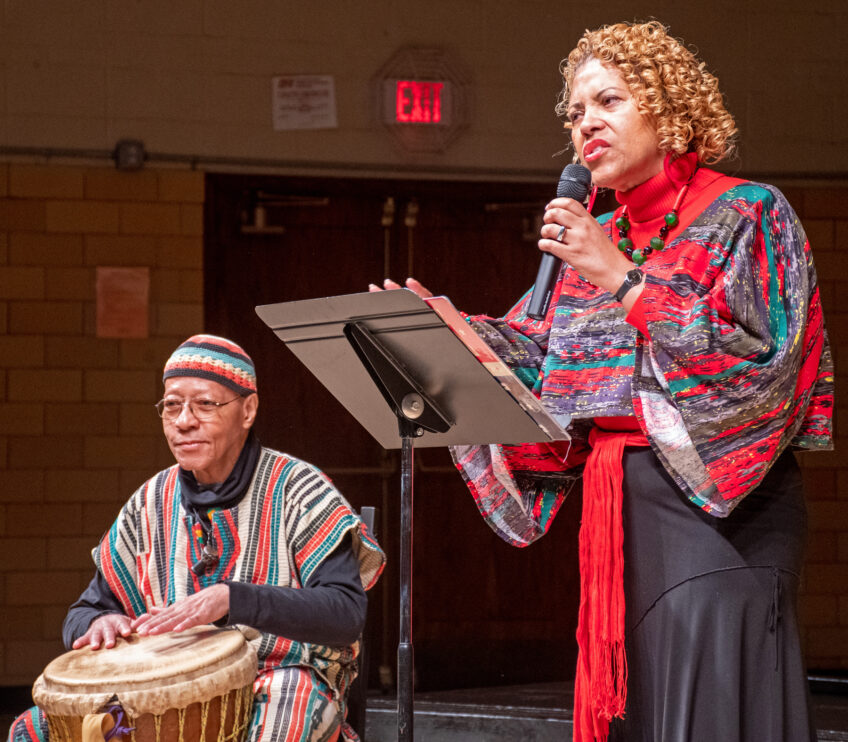Each year the Greenbelt Black History and Culture Committee organizes programs to acknowledge the contributions, commemorate the sacrifices and illuminate the achievements of Black Americans. This year’s theme is Black Resistance and Resilience in the African Diaspora, as determined by the Association for the Study of African American Life and History, founded by Carter G. Woodson, considered the Father of Black History Month.
Why acknowledge Black American history? History books have yet to tell the complete story of the nation. For example, Wes Moore was elected and sworn in as governor of Maryland on Wednesday, January 18. However, few of us know that in 1908, Maryland Governor Henry Lloyd vowed to disenfranchise Black residents and denounced Black voting rights as a threat to white supremacy.
The complete history of Maryland has yet to be printed in the history books used by educational institutions. That history should include the Piscataway nation and how their lands were stolen and their culture diminished.
Little has been written about the culture, skills and knowledge of enslaved Africans who helped generate the wealth of Maryland and the nation’s wealth their descendants don’t fully enjoy. Missing are the stories of how Black soldiers fought in every war beginning with the War of Independence, but were re-enslaved. Black soldiers were attacked and killed at various moments in American history for demanding their rights, denied veterans benefits and prevented from living in decent communities, as highlighted in the book, the Color of Law, by Richard Rothstein. There is nothing in the history books about how lands were stolen from Black farmers, preventing the development of generational wealth as was noted in The Case for Reparations by Ta-Nehisi Coates in the Atlantic Weekly, June 2014. Nor are many of us aware of Marcus Garvey and the Pan-African movement in the early 20th century and why it was so popular. The high numbers of Black people lynched throughout the country during that period, can hardly be coincidental. Black resistance and resilience and the struggle for full citizenship continues to this day.
Black History Events
Wednesday, February 1. A new art exhibit opens at the New Deal Café and the Greenbelt Arts Center featuring works by artists of color. This exhibit is being curated by Shaymar Higgs, director of The SPACE Free Art For All at Beltway Plaza. It will show up-and-coming artists.
Sunday, February 5 at 1 p.m. and 2 p.m. Artful Afternoon at the Community Center invites the public to create artwork from childhood memories based upon the African American folklore work of artist Blanch Ackers.
Also on Sunday, February 5, from 2 to 4 p.m. a reception will be held for the opening of the art exhibit at the New Deal Café.
Saturday, February 11, noon to 3 p.m. Lindsey Vance, in collaboration with Higgs and Beltway Plaza, invites the public to create a personal, family or community symbol of legacy that will be added to a community mural in celebration of Black History Month. That mural will be on display at Beltway Plaza.
On Sunday, February 19 from 2:30 to 4:30 p.m. information on the various cultures from the African Diaspora will be on display at the Community Center. The program will feature African drumming, spoken word artists, children dancing and a history and demonstration of Angola Capoeira.
On Sunday, February 26 there will be a free family film at the Old Greenbelt Theatre. Free transportation will be available from Springhill Lake Recreation Center. Details about transportation to the theater are available at the Center. Ask for the program flyer.
This year’s programs are sponsored by the Greenbelt Black History and Culture Committee together with Beltway Plaza, CHEARS, Greenbelt Arts Center, Greenbelt Recreation, Kaiser Mobile Health Unit, New Deal Café, Old Greenbelt Theatre, Peace and Justice Coalition and The SPACE Free Art For All.

